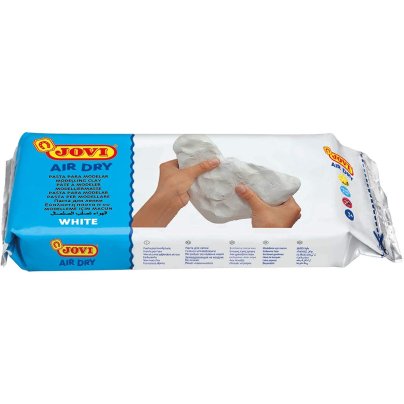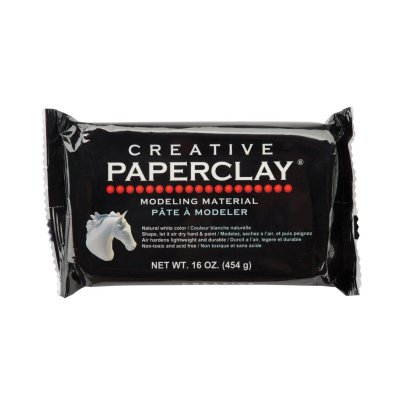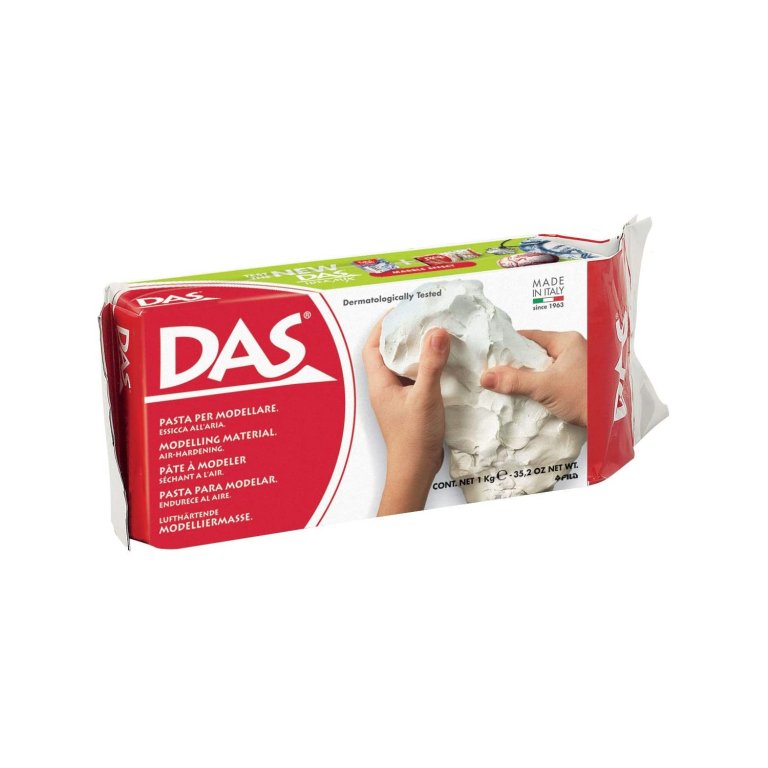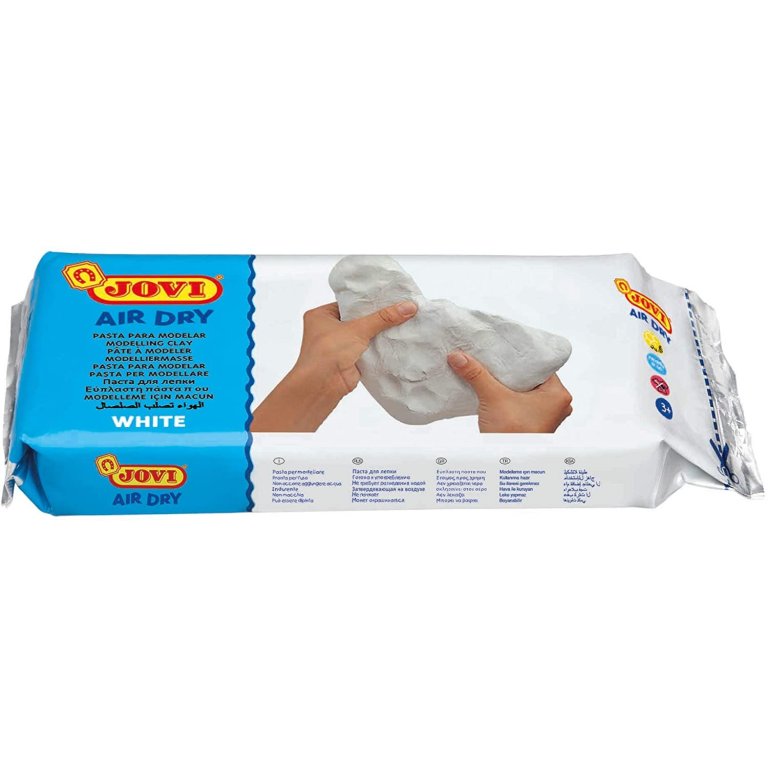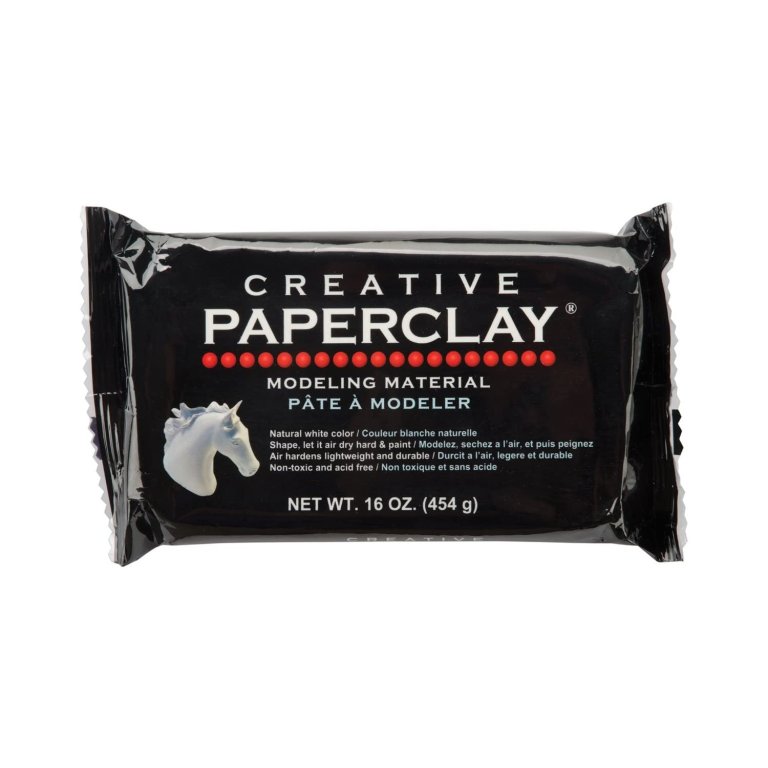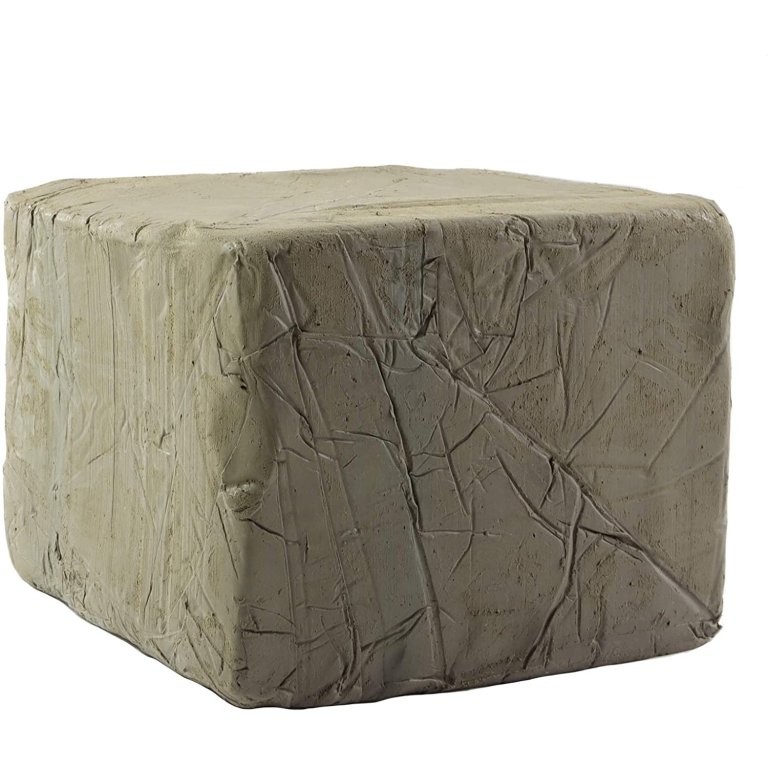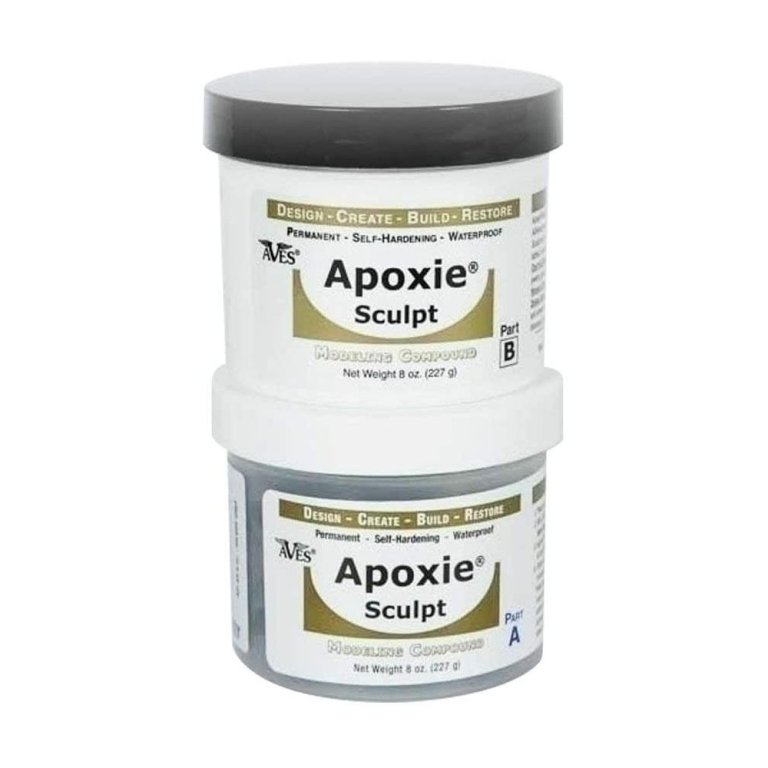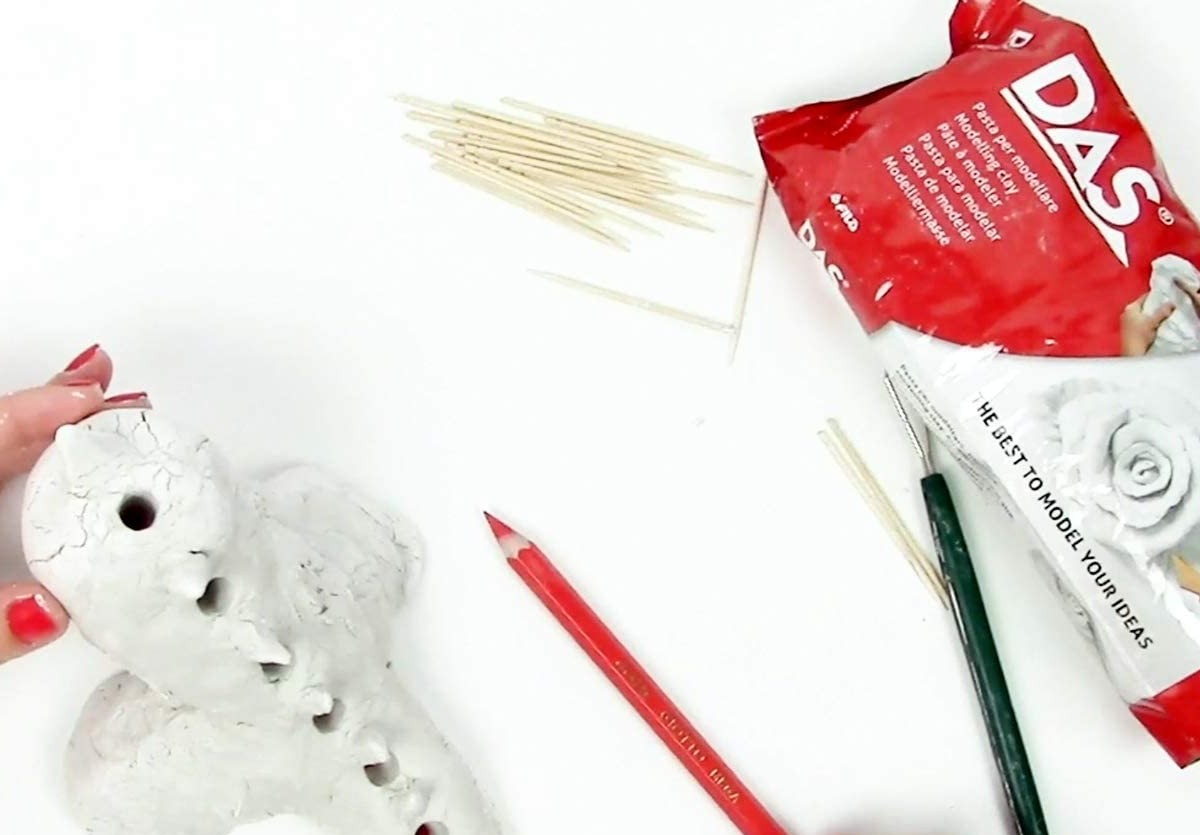
We may earn revenue from the products available on this page and participate in affiliate programs. Learn More ›
Making artwork and useful objects out of clay typically requires “firing” in a kiln—a type of high-temperature oven—to add durability to pottery, tiles, and sculptures. Fortunately, air-dry clay dries and hardens naturally at room temperature, usually within 24 hours.
Much like traditional clay, air-dry clay can be used for coiling, sculpting, slab construction, scoring, welding, and even used on a potter’s wheel. Different types of air-dry clay are better suited to particular crafting projects, so use this guide to learn what kinds will suit your artistic vision and some top picks currently available.
- BEST OVERALL: DAS Air-Hardening Modeling Clay
- BEST BANG FOR THE BUCK: Jovi Air Dry Modeling Clay
- BEST PAPER: Creative Paperclay for Modeling Compound
- BEST EARTHEN: Craft Smart Natural Clay
- BEST EPOXY: Apoxie Sculpt 2 Part Modeling Compound
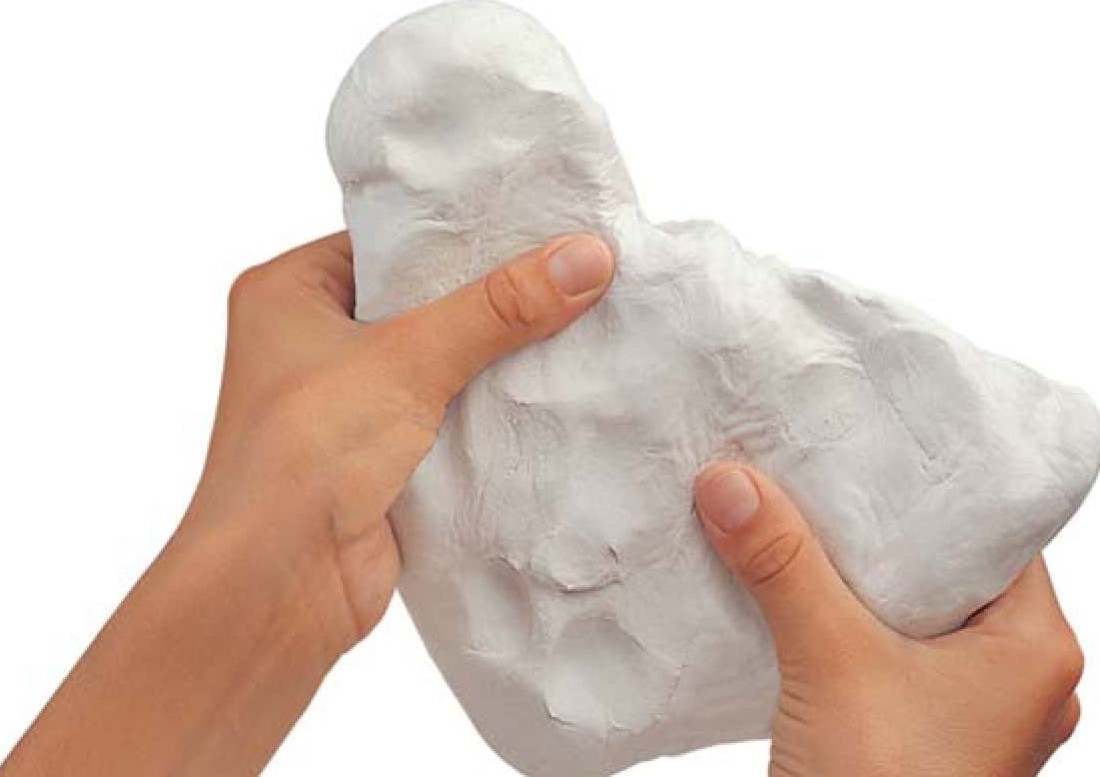
Types of Air-Dry Clay
Clay is a crafting medium with a few different subtypes, including paper-based, earthen, and epoxy two-part mixed-base. Choosing the right clay type depends on the user’s material preference and the particulars of the project. Unlike regular clay, each variety of air-dry clay has different ingredients, textures, dry time, and strength once hardened. Here are some of the most prominent clay types:
Paper-Based
Paper-based clay starts with a clay body, such as terra cotta or earthenware, then adds processed paper (or other cellulose fiber). The paper reduces a project’s weight, improves joining capabilities (paper fibers weave together), and decreases warping—all assets for sculpting and a host of other projects. Another benefit: To make alterations to a project, paper-based clay can undergo dry-to-dry and wet-to-dry joins. The paper fibers increase the firmness of the sculpture while minimizing shrinkage during the drying process.
Earthen
Earthen clay is the most common type of clay. It’s made of a natural clay body containing iron and other minerals from ground soil and the plant and animal life within it. These finely grained earth materials become pliable when wet, forming a nontoxic clay. Earthen clay can be stickier than other varieties, but it is easy to work and form with one’s hands and sculpting tools. This type of clay is similar to low-temperature kiln-fired earthen clay, but it isn’t as durable; it’s a good fit for sculpture and other “look but don’t touch” clay objects and projects.
Epoxy Two-Part Mixed-Base
Epoxy clay comes as (1) a resin and (2) a hardener that must be mixed thoroughly to set and dry properly. Once mixed, epoxy clay dries quickly; it takes up to two hours for the clay to harden. Once the two-part compound dries, the user cannot make alterations to the structure of the work.
The good news is that epoxy clay is quite solid when it dries, so it’s a good choice for jewelry, ornaments, and other objects that people handle. Depending on the brand, epoxy air-dry clay may be called waterproof because of the strength of the chemical bond, but it’s best to err on the side of caution and put plastic liners inside pottery used as a vase.
What to Consider When Choosing the Best Air-Dry Clay
Quality and durability vary depending on the type and brand of air-dry clay, but the project should largely determine the choice. Consider:
- Is the project something that must be structurally sound, such as a large sculpture or mobile?
- Must the clay be easy to manipulate and shape to create small details?
- How important is the overall weight or lightness of the finished piece?
- Will alterations be necessary as the project dries?
- Will this be a work-in-progress that takes several days to finish?
Understanding the following factors and features of air-dry clay will help when selecting the right clay product.
Strength
While air-dry epoxy clays harden the best (and fastest)—becoming tough enough to drill holes in it without creating cracks—other air-dry clays can be fragile and prone to cracking. There are a few ways to strengthen air-dry clay and prevent cracks:
- Use internal armatures when sculpting to help provide strength.
- Limiting the amount of water added to air-dry clay will lessen chances of cracking as the piece dries.
- Air-dry clay shrinks a little as it dries, and cracks form if it dries unevenly. To help it dry evenly, rotate the piece in different positions (if possible) to enable airflow to all surfaces or drape plastic over it so water evaporates more slowly.
- Once air-dry clay hardens, a coat of shellac or acrylic paint can make the piece stronger.
- When it dries, air-dry clay is porous. It is not intended to be used outdoors or to make functional kitchen objects. Finished projects should be kept inside and away from water and moisture to prevent warping and maintain strength.
Texture
Texture varies for different types of clay, but in general air-dry clay is softer than traditional clays. Earthen clays may feel a bit sticky and hard right out of the package, but molding it should soften it and make it easier to work with.
Air-dry clay may develop a rougher texture as it dries, but this can be sanded to a smoother surface starting with medium sandpaper (60–120 grit) for rougher spots and then refining to fine (160–240 grit) or superfine (400–800 grit) to polish. Paper-based air-dry clays have a fluffy and lightweight texture but may have some stray paper/cellulose fibers that need to be smoothed out with sanding.
Color
Earthen clay is typically available only in natural tones, such as white, gray, beige, and black. Epoxy clay comes in a variety of vibrant colors, and combining colored clays creates still more tones. After it hardens, air-dry clay can take paint; choose acrylic paint to add strength without warping. Hardened clay can also be enhanced by gluing on embellishments like decorative buttons or beads.
Workability
Many air-dry clays are easy to work with right out of the package since they’re softer by design. The exception is earthen clays, which are generally a bit harder when new and need a few minutes of work with the warmth from the user’s hands to become malleable.
Many types of air-dry clay are no longer workable once dry, so for projects that will take a few days, choose earthen clay, cover the work-in-progress with a damp towel between sessions to keep it in a workable state, and rub in a bit of water to restore malleability.
Adherence
Air-dry clay may stick firmly to a variety of materials, including plastic, wood, glass, and metal; some even stick to cardboard. Air-dry clay adheres nicely to armatures, which also provide support for the project.
To add or attach pieces of air-dry clay, score both attachment sites, using a small wire brush or needle to scratch hatch marks. Scoring gives the pieces a better surface to stick to when joined together, minimizing the risk of the attachment cracking or breaking after it dries.
Paintability
After clay dries completely, use acrylic paint to decorate the piece. Avoid globbing paint on, however; it’s better to apply two thin coats, allowing for dry time in between, to help maintain the structural integrity. Once painted, a sealing product such as Mod Podge (an all-in-one glue, sealer, and finish typically used in decoupage), varnish, or acrylic sealer can further protect the project.
Longevity
To prevent unused clay from setting and becoming unworkable, try to maintain the same moisture level it had when it came out of the package and store it in an airtight plastic bag to hold. To help protect the lifespan of finished products, coat with a layer of Mod Podge or acrylic paint to seal it.
Drying Time
Air-dry clay starts to dry as soon as it’s exposed to air. In general, it takes at least 24 hours (up to a week for some projects) for air-dry clay to dry completely, though epoxy clays harden more quickly and dry in just a few hours. Drying slowly and evenly is the best way to avoid cracking, so if the clay is drying too quickly, drape a plastic cover loosely over the top to slow down water evaporation.
Our Top Picks
The specific project will determine which air-dry clay is most suitable. The clays below meet the purchase considerations outlined above and include suggestions for each type of air-dry clay.
Best Overall
DAS Air-Hardening Modeling Clay
Pros
- Crack-resistant
- Non-toxic; suitable for all ages
- Comes in multiple colors
- Suitable to use with acrylic and tempera paint
Cons
- May not be suitable for outdoor items or projects
Product Specs
- Type: Paper
- Color(s): White and terra cotta
- Drying Time: 24 hours
High-quality, crack-resistant DAS Air-Hardening Modeling Clay is a good choice for beginners and skilled crafters alike. This paper clay is quite pliable and has an even texture that makes shaping and creating small details easy. It also adheres well to supports or armatures.
Dry time is about 24 hours, but once solid the clay—which is available in white and terra cotta—should be smooth enough to paint without sanding; it takes acrylic and tempera paints nicely. Beyond crafting, it can be used for small household projects such as mending chipped pottery or adding a unique design element to a lamp.
Get the DAS modeling clay on Amazon and at Walmart.
Best Bang For The Buck
Jovi Air Dry Modeling Clay
Pros
- Smooth texture
- Odorless
- Ready-to-use
- CPSIA-certified
Cons
- Not suitable for baking in the oven
Product Specs
- Type: Paper
- Color(s): White
- Drying Time: 24 to 48 hours
With a smooth texture that’s easy to knead and shape, Jovi’s Air Dry Modeling Clay is a high-quality, affordable choice for crafting. What’s more, the odorless, nontoxic modeling clay is made of natural ingredients, free of allergens and gluten (a consideration for those with sensitivities), and Consumer Product Safety Improvement Act (CPSIA)–certified.
Jovi’s self-hardening clay is housed in airtight plastic to be soft and ready to use right out of the package. Somewhat less sticky than traditional clays, it adheres to most materials, including wire, wood, and even cardboard. It comes in white and terra cotta, doesn’t stain, and dries completely in 24 to 48 hours (depending on your project). Once it’s dry, paint it, varnish it, or cut the material to create the desired result.
Get the Jovi modeling clay on Amazon and at Walmart.
Best Paper
Creative Paperclay for Modeling Compound
Pros
- Suitable for sculptures and molds
- Odorless
- Can be painted and/or sanded
- Dries in the oven in 30 minutes
Cons
- Takes some time to dry if not baked in the oven
- Small quantity
Product Specs
- Type: Paper
- Color(s): White
- Drying Time: 30 minutes to 24 hours
Particularly suited to sculpture and molds, Creative Paperclay is a good choice for discriminating crafters who don’t want to lose minute details or see their project shrink as it dries. When used with silicone molds, the clay pops out cleanly and easily. This odorless paper clay is smooth to the touch, not overly sticky, and easy to shape manually or with crafting tools.
Creative Paperclay is white and takes paint well. It adheres easily to armatures and most canvases without glue. While dry time depends on the scope of the project and clay thickness, it often dries completely overnight. But, if your project is small, this compound can bake in the oven and dry in 30 minutes. The result is lightweight and sturdy with a surface the user can sand and paint.
Get the Creative Paperclay modeling compound on Amazon and at Walmart.
Best Earthen Clay
Craft Smart Natural Clay
Pros
- Suitable for long-term art projects
- Softens with water
- 100 percent natural and non-toxic
- Can be painted after drying
Cons
- Pricey compared to similar options
- Not suitable for firing or wheel throwing
Product Specs
- Type: Earthen
- Color(s): Gray, white, and terra cotta
- Drying Time: 24 hours
One benefit of earthen air-dry clay is its suitability for long-term projects, and this Craft Smart product is a reliable choice for ongoing modeling, sculpting, and pottery works. Simply add a little water to soften the clay, and keep on creating. Unlike other air-dry clays, this natural clay is robust enough to use on a potter’s wheel, making it suitable for decorative bowls and vases.
This 100 percent natural, non-toxic clay has no chemical stabilizers or additives, so its ingredients do emit a slight odor. Available in gray, terra cotta, and white, the clay is ready to paint as soon as it’s dry. Once dry, this material is fragile but can be strengthened by adding a layer of shellac to the finished product.
Get the Craft Smart clay on Amazon.
Best Epoxy
Apoxie Sculpt 2 Part Modeling Compound
Pros
- Rock hard once dried
- Semi-gloss finish
- Suitable for use with paint, stain, and mica powder
- Can be drilled, carved, and sanded after drying
Cons
- Cannot be altered after 2 hours
- Pricey compared to similar options
- Chemical odor
Product Specs
- Type: Epoxy
- Color(s): 12
- Drying Time: 24 hours
For crafts that need a lot of strength, this Apoxie Sculpt clay is a (literally) solid choice. It comes in two containers; mix equal parts of the two compounds to create a putty-like sculpting clay with the power of epoxy. As long as it’s mixed properly, it will produce smooth, easy-to-use clay that sticks to most surfaces.
The chemical-compound nature of this clay gives it a minor chemical odor, but the fumes are not toxic. Remember that epoxy clay will become unworkable after about two hours, so have a clear vision in mind before starting. In about 24 hours, the piece will be rock hard, with a semi-gloss finish. Though it’s available in 12 colors, the user can still paint, stain, apply mica powder, and otherwise embellish the dried piece. The strength of this clay stands up to sanding, drilling, carving, and more without cracking or chipping.
Get the Aves modeling compound on Amazon.
Our Verdict
If you are in need of a versatile air dry clay that is non-toxic and suitable for all ages, the DAS Air-Hardening clay is crack-resistant, dries in 24 hours, and comes in white and terra cotta. For serious art projects, the Creative Paperclay clay can be painted or sanded making it suitable for sculptures and molds. Plus, it can adhere to armatures and canvases if needed.
How We Chose the Best Air Dry Clays
We researched the most sought-after air dry clays in their respective categories and discovered that the best options are determined by their type, ingredients, drying time, adjustability, and other special features included by select brands.
While searching for the best possible air dry clays, we discovered that the most popular type among users was the paper-based options due to their lightweight, malleable consistencies, and non-shrinking capability after drying. While not as popular, other clays like earthen- and epoxy-based clays are also viable options for serious sculpting and rock-hardness after drying.
While some of the above clay products are made with chemicals, the majority of these options are non-toxic or 100 percent natural for all-age use, come in multiple colors, and dry within 24 hours. Almost all of the above options are suitable for sanding, painting, staining, and rilling after fully drying.
FAQs
Eager to start creating with air-dry clay but still want more information? Consider these answers to common questions about this type of crafting clay.
Q: Is air-dry clay suitable for making cookware?
No. Air-dry clay is not food safe or waterproof, making it unsuitable for functional cookware.
Q: What is the difference between air-dry clay and regular clay?
Regular clay needs to be fired in a kiln or heated in an oven. Air-dry clays dry naturally without being heated.
Q: What is the difference between air-dry clay and polymer clay?
Polymer clay is based on polyvinyl chloride (PVC) that needs to be worked to soften it up and baked to cure. Air-dry clay is softer and lighter than polymer and self-hardening.
Q: What kinds of craft projects can you use air-dry clay for?
Air-dried clays can be used for a variety of craft projects, including sculpture, jewelry, ornaments, decorative bowls, or home-decor embellishments. Find inspiration for a future craft with these air-dry clay projects.

